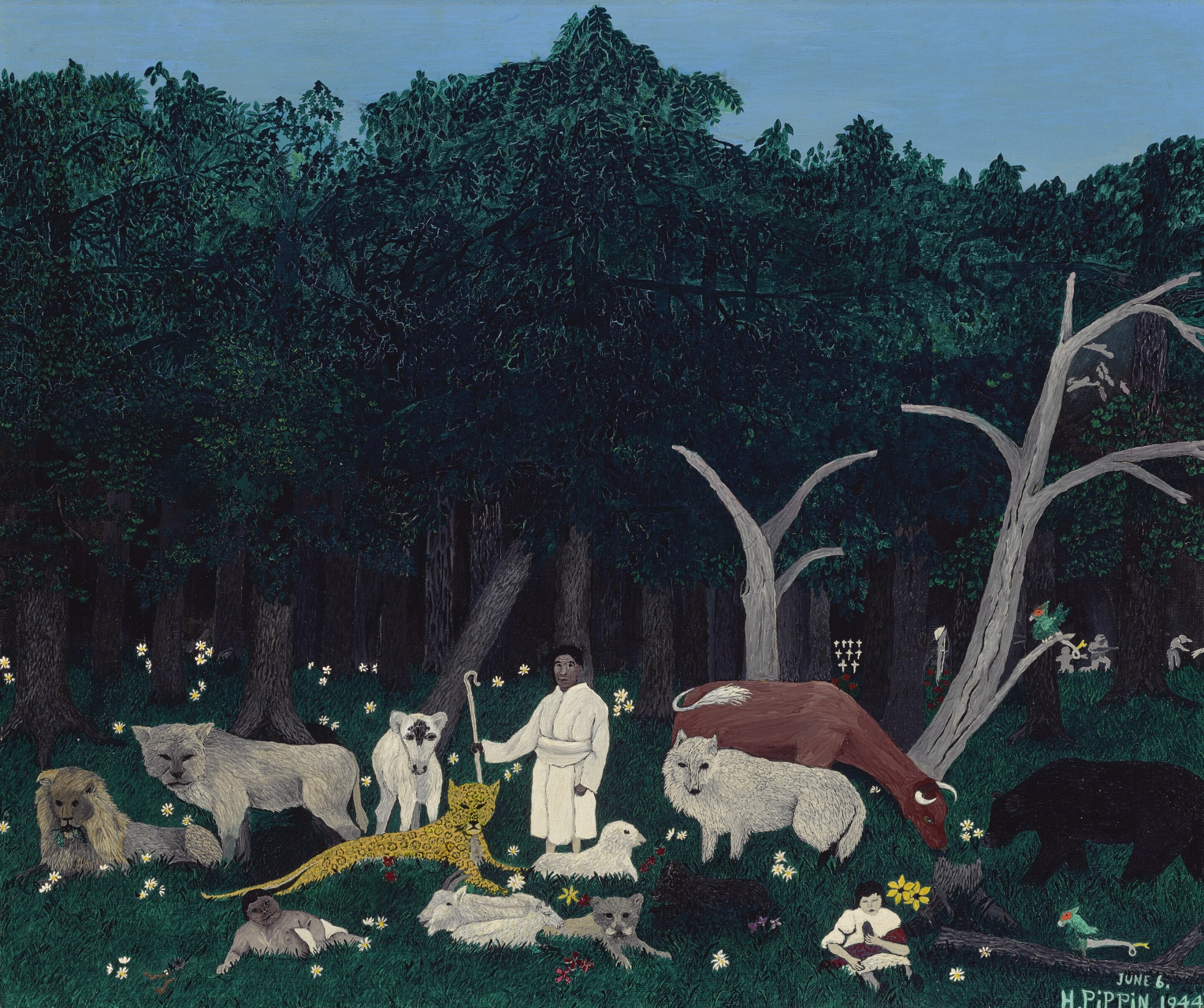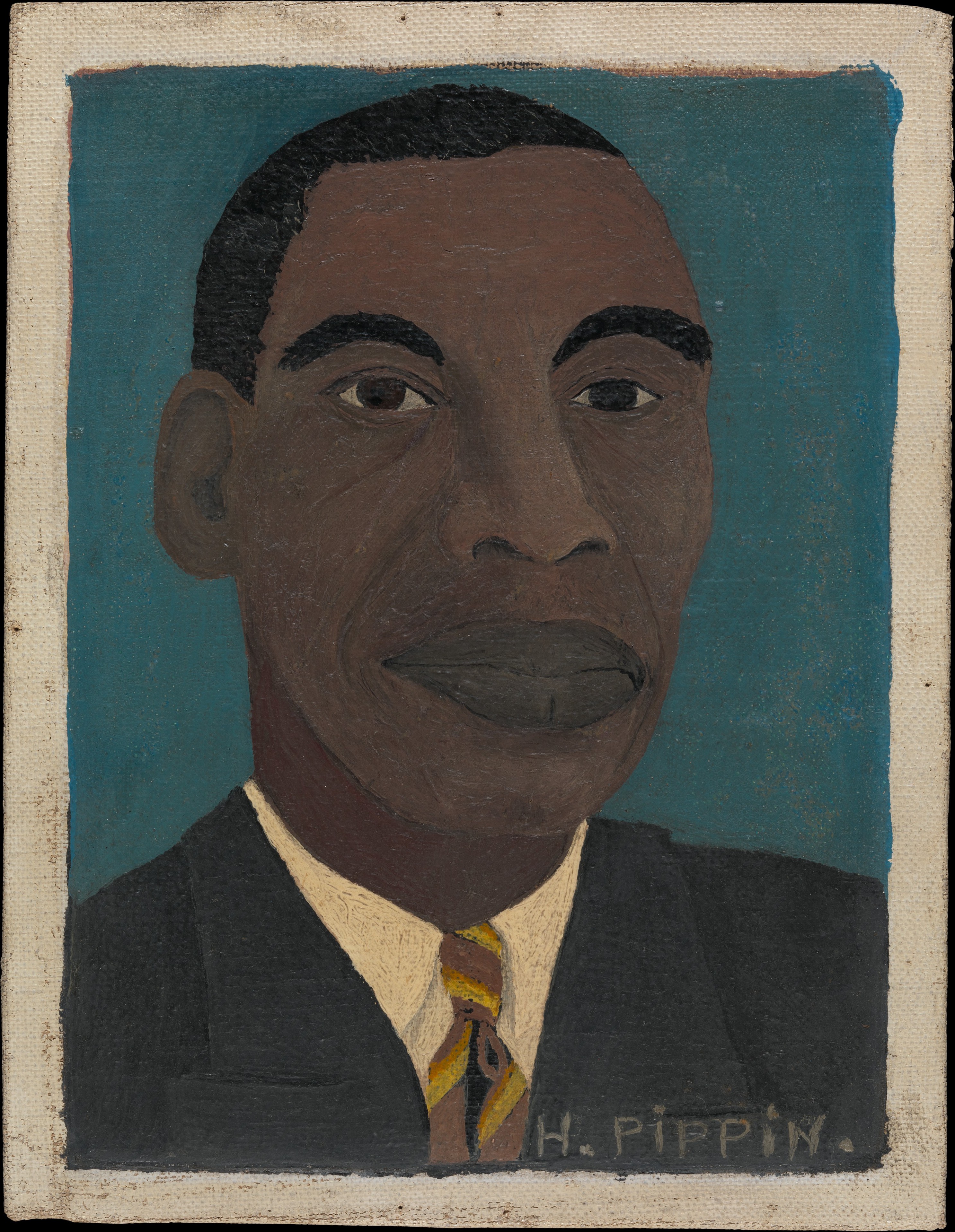Horace Pippin, a self-taught painter from West Chester, Pennsylvania, started his artistic journey at the age of 37. He would become one of the foremost African American artists of the 20th century, celebrated for his unique artistic style and distinctive portrayal of American life. In 1917, at the age of 29, he enlisted in the National Guard, and according to Pippin himself, World War I was a catalyst that "awakened the artist within me." During his time in the French trenches, Pippin maintained an illustrated journal, though only six of these drawings have survived. Nonetheless, they hinted at the imagery that would later characterize his work.
Later, during the final years of World War II, Pippin created his Holy Mountain series, consisting of four works, though the final painting remained unfinished. Inspired by an Old Testament passage, this series depicted the prophesied peaceable kingdom mentioned in the book of Isaiah and reflected the artist's spiritual disposition. Pippin had grown up in the African Methodist Episcopal Church, and his exposure to religious art was likely limited to mass-produced chromolithographs found in Bibles and church vestibules. While he explored biblical themes in only ten of his paintings, a relatively small portion of his total body of work, many of these pieces, including the Holy Mountain series, are considered among his finest and most successful compositions.
Today's artwork evoked Edward Hicks' Peaceable Kingdom series, created between 1820 and 1848, with which Pippin would have undoubtedly been acquainted. Pippin tailored the subject to reflect both his personal experiences and the cultural climate of his time. In the center of the composition, a shepherd of African descent, clad in a bright white robe, stands surrounded by a group of children and both real and mythical animals, set against a lush landscape. This shepherd bears a striking resemblance to Pippin himself and is often interpreted as a self-portrait. Pippin juxtaposed this harmonious foreground with a foreboding and ominous background, where soldiers lurked in the forest near a military burial ground. The date of Holy Mountain I, June 6, 1944, coincided with D-Day, a pivotal moment in World War II when Allied forces landed on the Normandy beaches, underscoring the ideological contrast between war and peace.
This painting is a part of our Black History Month celebrations! :)
P.S. If you like animals on paintings, please check our Animals 50 Postcards Set. :)
P.P.S. Learn more about Horace Pippin and see some of his unique artworks!


 Horace Pippin
Horace Pippin